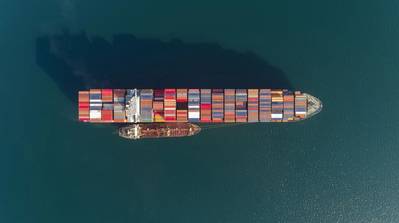Marine Fuel Market Facing Tougher Q3 as Supply Rises
Global supply of fuel oil, used by ships and power plants, is expected to grow in the third quarter, depressing the marine fuel market as shipping demand remains weak, analysts and trade sources said.
Third-quarter supply is estimated to rise by 620,000 barrels per day (bpd) from the second quarter as China and Brazil increase production, according to consultancy Energy Aspects.
This comes as inventories across key marine refueling hubs recently reached all-time highs, depressing bunker fuel prices and refiners' margins and dashing hopes for a profitable year for sellers of low sulfur fuel that meets new emission regulations set by the International Maritime Organization.
"We had 9-10 million tonnes (of fuel oil inventories) at the start of the year that was supposed to draw by the start of Q2 but we are seeing 13 million tonnes now and (it is) building every month," said a senior fuel oil trader who declined to be identified.
Inventories in northwest Europe and the United Arab Emirates were at record highs in June while those in top bunkering port Singapore climbed to their highest level in more than three years.
Record supplies have depressed the delivered VLSFO (very low sulfur fuel oil) bunker spot discount to around record lows of about $45 per tonne below benchmark gasoil prices and cut Asian refiners' profits by nearly 80% from their record highs at the start of the year to $10.25 a barrel on Thursday, according to trade sources and Refinitiv data.
Signs of weakness in bunkering demand have also emerged in Singapore, which is by far the world's largest marine refueling hub, and in the UAE's Fujairah hub.
"Until recently, bunker fuel sales at key bunkering hubs were buoyed by opportunistic restocking, but sales volumes have since caught up with the reality of slowing global trade," Energy Aspects said in a note on Wednesday.
"Weak demand and rising supplies have meant that VLSFO cracks are struggling to stay in positive territories as refinery restarts on account of improving on-road fuel demand continue to depress the sluggish bunker market."
And the demand outlook remains weak, according to multiple Singapore-based bunker traders.
"A meaningful rebound in bunkering demand is unlikely before the end of the summer," Energy Aspects said.
The number of container ship blank sailings, for example, increased to 82 in the week to June 28 from just 13 in the week of May 17, Alan Murphy of consultancy Sea-Intelligence said on Tuesday.
An increase in blank sailings, or the number of vessels that skipped a port along its route or has had its entire journey cancelled, is likely to limit demand for bunkers.
Similarly, spot crude oil tanker fixtures fell 7% in the first half of 2020 compared to year-ago levels as the coronavirus, Poten & Partners said in a note on Friday.
The International Monetary Fund has predicted a deeper global recession as the coronavirus pandemic causes wider and deeper damage to economic activity than first thought.
"The IMF projection – if it turns out to be correct – is telling us that the current low demand levels are likely to persist for a while," Murphy at Sea-Intelligence said in a note.
(Reporting by Roslan Khasawneh; editing by Florence Tan and Jason Neely)














